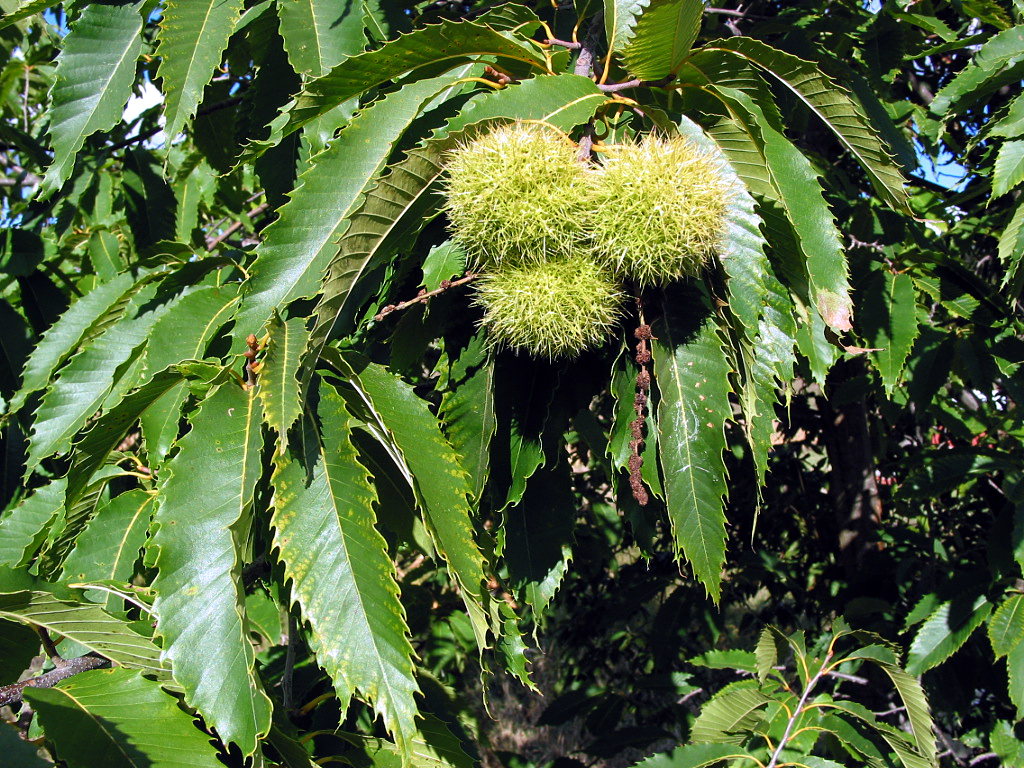Chestnut tree used to be the most common tree found in Lonesome Valley. The fact is that 2/3 of the trees found in our mountains were chestnuts before the blight hit in the 30's.
The story goes that before the bight cattle and hogs were brought to the valley in the fall to feed on the chestnut. Some hogs it is said got so fat they cound not walk.
Chestnut trees grew faster than oaks, and provided hardwood lumber which was the prefered material for
building homes. Old home constructed of chestnut are quit valuable for there lumber. They are dismantled and the wood used for paneling, and furniture.
There are no more large chestnuts unfortunately. The species was attached by a vireus back in the 30' and 40's.
The blight began in Broklyn ,NewYork where a forien spieces of chestnut introduced an airborne pathogene that infectes the native trees. Once infected cankers grow on the tree's bark caused it to seperate from the tree's core and the eventual death of the tree's crown.
The roots, however, are not affected and continue to grow. New shoots are send up which grow until their bark begins to mature. As it matures the bark become ridged and cracked. At this point the young sapling is vulnerable to attacks by the blight and the cycle is repeated. The shoot dies, the roots survive.
When you out in Lonesome Valley it is hard to go far without seeing a chestnut shoot. The leaves are long, six inches or more, and the side are serated.

The story goes that before the bight cattle and hogs were brought to the valley in the fall to feed on the chestnut. Some hogs it is said got so fat they cound not walk.
Chestnut trees grew faster than oaks, and provided hardwood lumber which was the prefered material for
building homes. Old home constructed of chestnut are quit valuable for there lumber. They are dismantled and the wood used for paneling, and furniture.
There are no more large chestnuts unfortunately. The species was attached by a vireus back in the 30' and 40's.
The blight began in Broklyn ,NewYork where a forien spieces of chestnut introduced an airborne pathogene that infectes the native trees. Once infected cankers grow on the tree's bark caused it to seperate from the tree's core and the eventual death of the tree's crown.
The roots, however, are not affected and continue to grow. New shoots are send up which grow until their bark begins to mature. As it matures the bark become ridged and cracked. At this point the young sapling is vulnerable to attacks by the blight and the cycle is repeated. The shoot dies, the roots survive.
When you out in Lonesome Valley it is hard to go far without seeing a chestnut shoot. The leaves are long, six inches or more, and the side are serated.

Comments